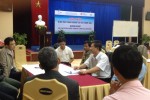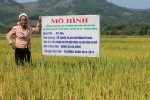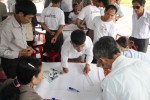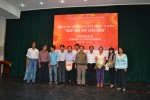Disaster Risk Assessment at school: When teachers, students and communities participated actively
Recently, 7 primary schools in Quy Nhon and Tuy Hoa cities including Nhon Binh no.1, Nhon Binh no.2, Hai Cang, Hoang Quoc Viet, Le Quy Don, Le Van Tam and Bach Dang primary schools have finished conducting Disaster risk assessment (DRA) at school with the technical support of Binh Dinh and Phu Yen VNRC Chapters. The purposes of DRA at school are to identify the risks, threats, and vulnerabilities at those schools, as well as their capacity in preparedness and response to natural disasters. DRA at school is one of the important steps in order to build safe school model, a model which is considered still new in Viet Nam.
In order to raise the schools’ capacity and active role in self-protection, Binh Dinh and Phu Yen Chapters did not conduct the DRA themselves but instead let the school do it while the VNRC chapters assisted them. The evaluation team of each school includes 10 members selected from the school disaster management boards. These are the teachers who participated in Safe school training courses organized by German Red Cross and the 2 VNRC Chapters from November 2014 to February 2015. Safe school is not only a crucial topic for teachers and students, but also for the parents. Therefore, in order to conduct DRA comprehensively, in total, 210 teachers, 210 students and 210 parents from the 7 primary schools have been directly involved in the assessment.
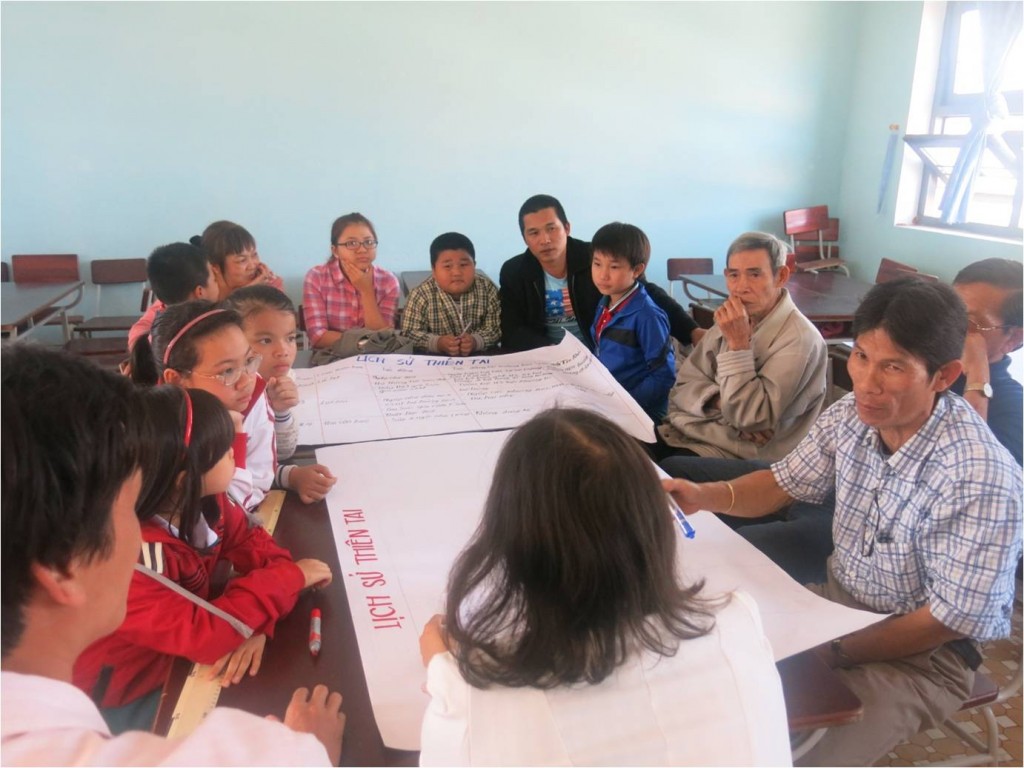
[Nhon Binh no.1 primary school (Quy Nhon city)] Teachers, students and their parents discussing on the history of natural disasters at the school and the surrounding area with the facilitation of the teachers who are in the school evaluation team
Mr. Vo Chi – Head of Parent Association of Hai Cang primary school, shared that: “The local people sometimes do not understand clearly about disasters, risks, and damages. These activities really helped us widen our knowledge. Moreover, when disasters occur, children are usually mentally shocked. I think this assessment did prepare for the children to actively respond when disasters come. In addition, I think it is always true that if we have disaster preparedness and response (DP&R) plan, we can respond better and more actively so as to reduce damages caused by natural disasters.”
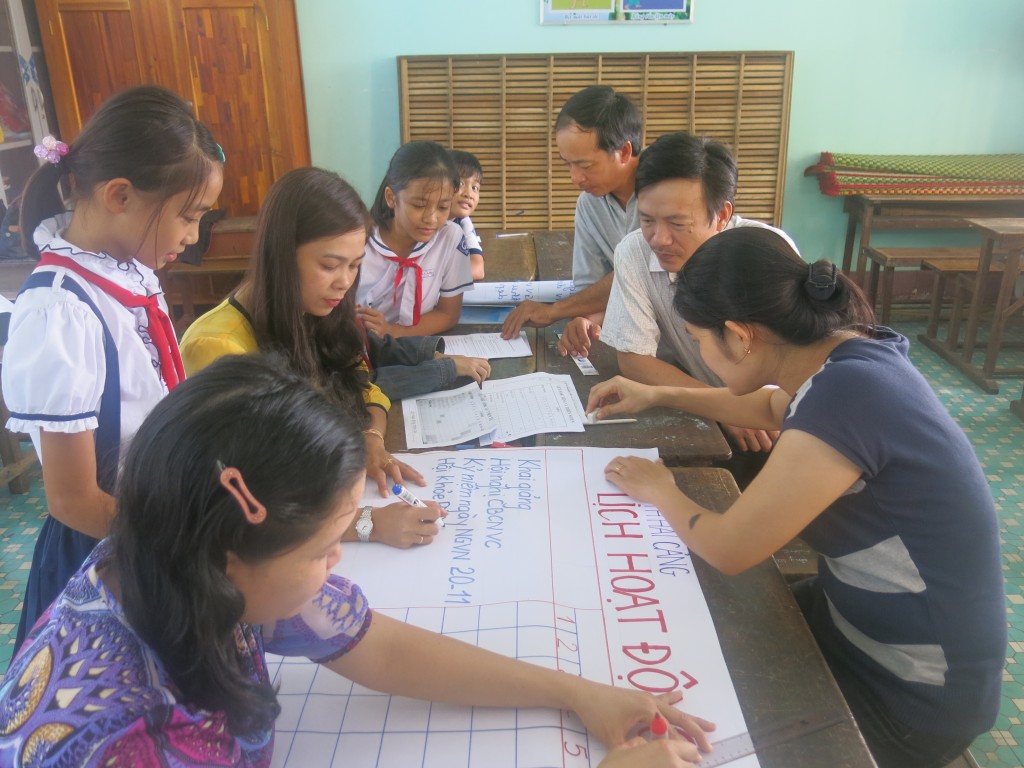
Mr. Vo Chi (second from the right) with the teachers, other parents and students conducting “Operation calendar” tool which aims at listing the different hazards and the different school activities occurring during the calendar year.
Ms. Pham Thi Thu Ha, an art teacher, eagerly shared that “The DRA is such a rare activity that teachers, parents, and students cooperated with each other to implement. I found that the children and their parents participated in the evaluation very actively and they really enjoyed it. I wish there would have more activities like this for teachers, students and parents to learn from each other.” She also talked about how the assessment changed her thoughts and behaviours: “As an art teacher, I was not interested in integrating the topic of DP&R in my lessons. From now on, I will actively integrate this topic into my lessons in order to guide my students what to do and not to do in DP&R”.
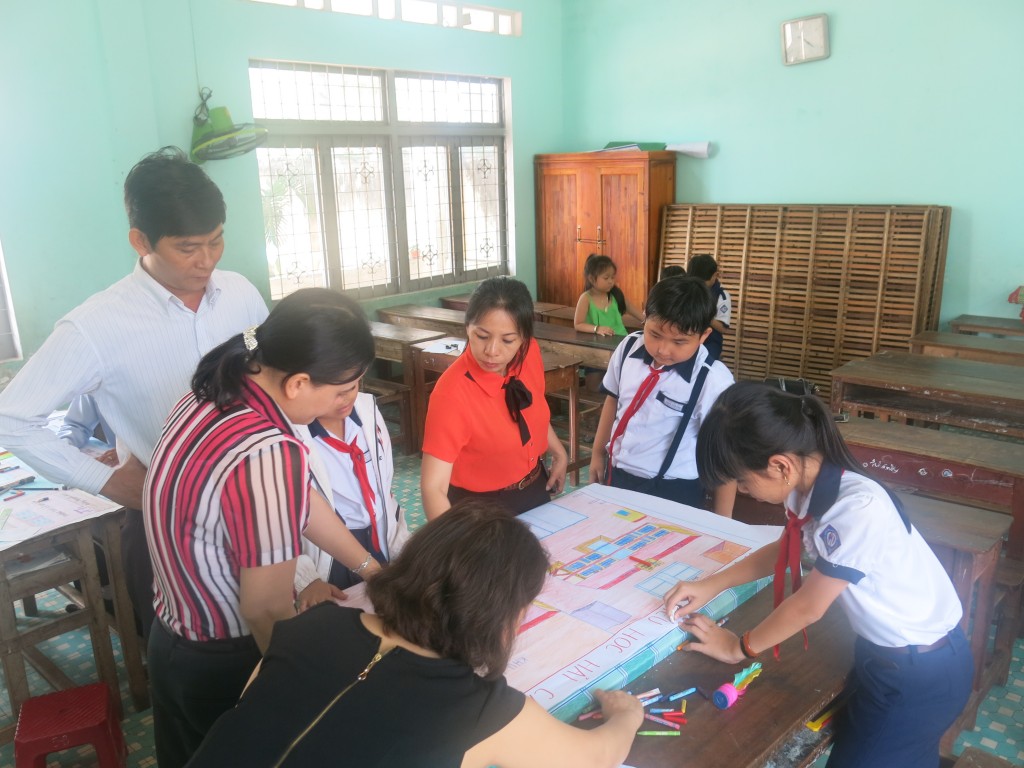
Ms.Ha (orange shirt ) with the students and parents drawing maps showing the different risks and vulnerabilities of Hai Cang primary school and the surrounding areas
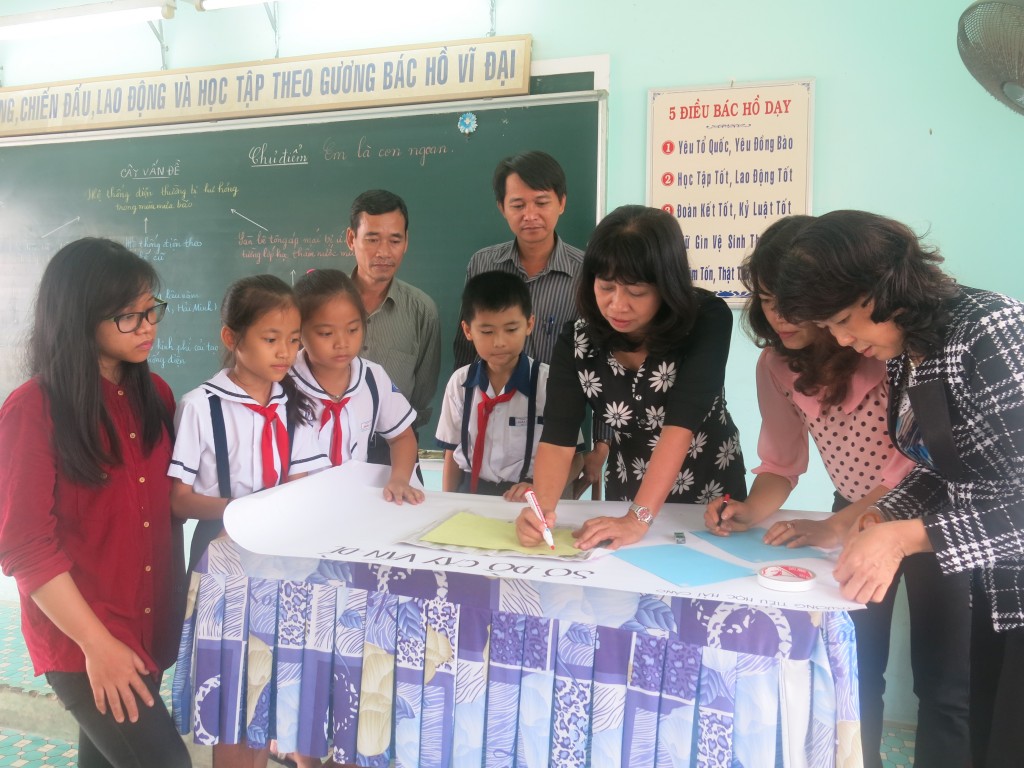
Teachers, parents and students of Hai Cang primary school developing the “problem tree” to identify the school’s risks
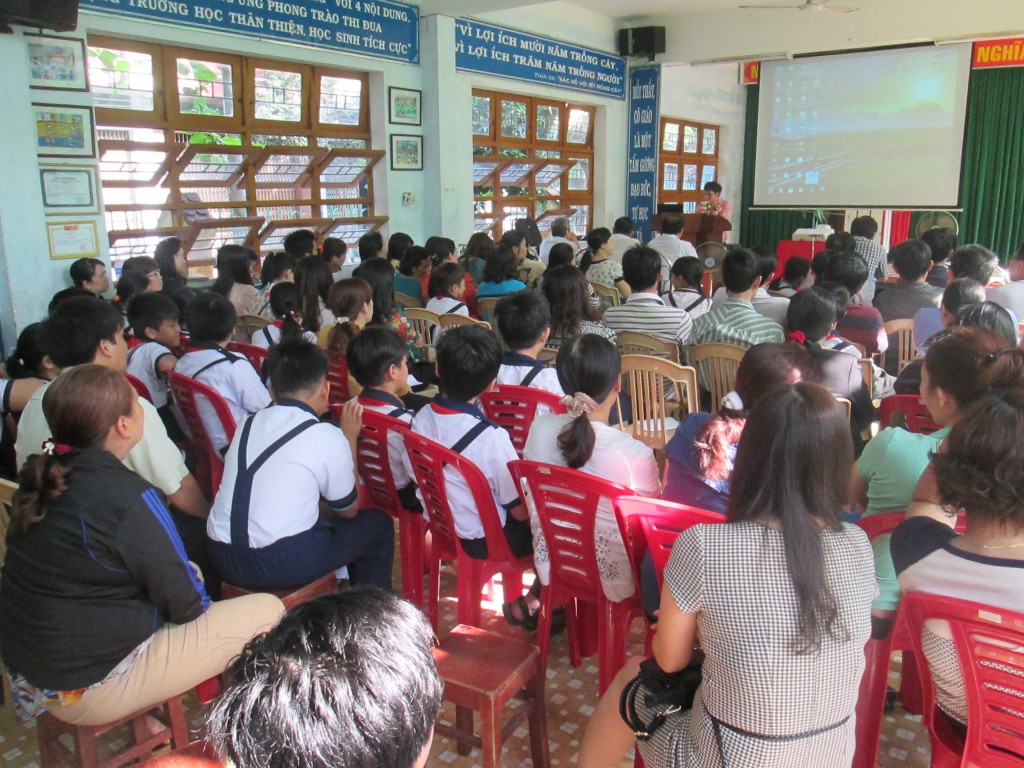
Overview of meeting on DRA introduction at Hoang Quoc Viet primary school (Quy Nhon city)
Based on the assessment’s results, the school disaster management boards together with the teachers have developed their annual safe school plan. The plans propose structural and non-structural measures such as establishment of water filter systems or repairing electricity systems, etc. in order to ask for the involvement and support of the Departments of Education & Training, local authorities, other external organisations and donors to build safe school model more effectively.
Although during the DRAs the school evaluation teams have showed their limitations in methodology, assessment tools, information collecting skills,…the schools and parents did express their high appreciation to the activity as well as their enthusiastic participation. In short, this activity remains a good initiative which showed that the school communities (Board, teachers, students, parents…) are taking now an active role in assessing, planning and building safer schools. This is one of the significant achievements of the FPP in the school sector since empowerment of the project beneficiaries is a critical step in building safer schools during natural disasters as well as in general./.
Bui Thi Minh Chau
GRC PO in Binh Dinh


